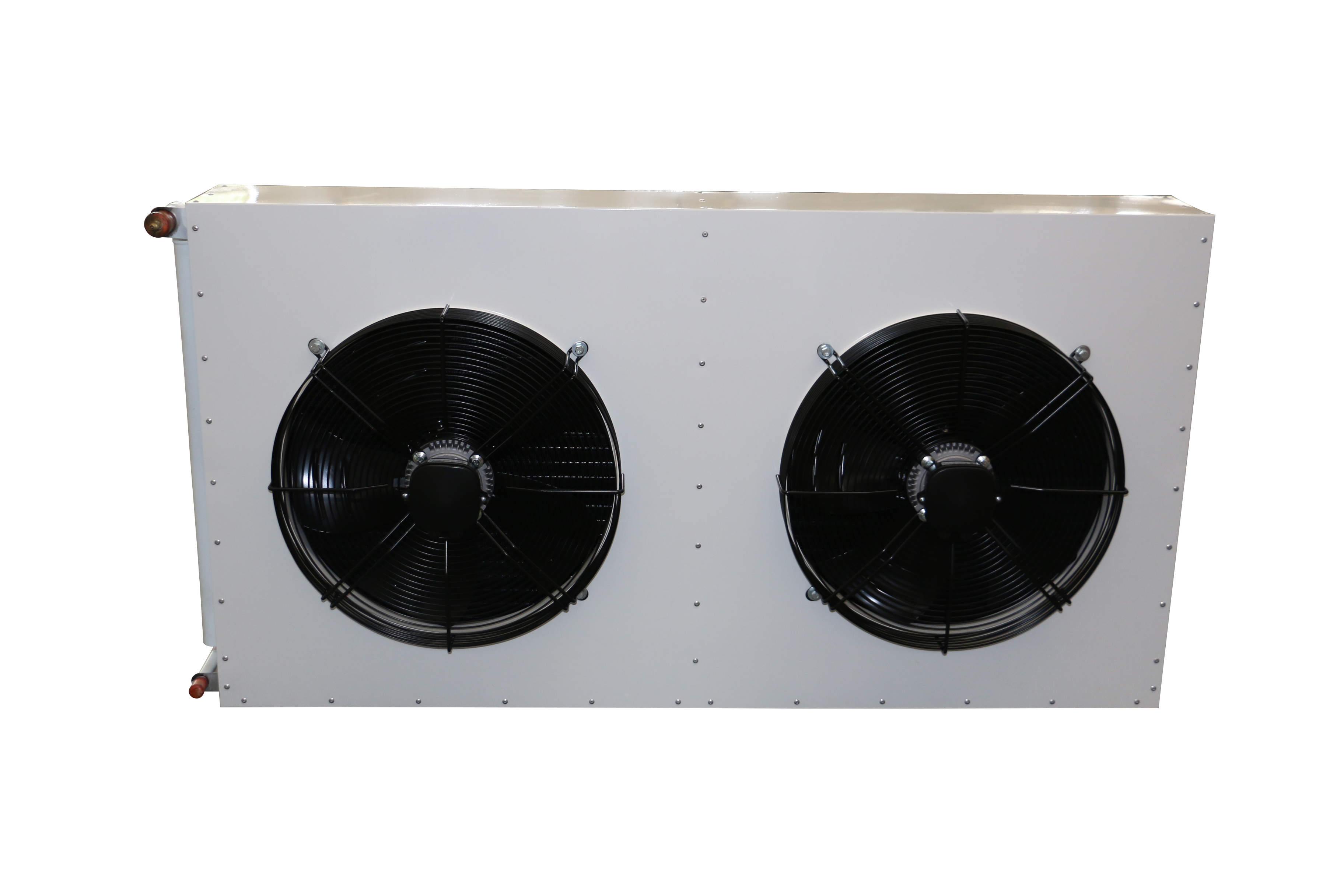Recently, a small partner is asking the most basic questions about refrigerators, so let's start with the "four major components" of refrigerators. The refrigeration system has four parts: compressor, condenser, evaporator and throttle valve. Today, let's talk about the types and characteristics of condensers.

Classification of condensers:
Condensers can be divided into three categories: water-cooled, air-cooled and evaporative according to their different cooling media.
1. Water-cooled condenser
The water-cooled condenser uses water as the cooling medium, and the heat of condensation is taken away by the heating of the water. Cooling water is generally used in circulation, but a cooling tower or a cold pool should be installed in the system. Water-cooled condensers can be divided into shell-and-tube condensers and jacket-and-tube condensers according to their structural forms, the most common being shell-and-tube condensers.
The main features of the vertical shell and tube condenser are:
(1) Due to the large cooling flow and high flow rate, the heat transfer coefficient is high
(2) The vertical installation occupies a small area and can be installed outdoors.
(3) The cooling water flows straight and the flow rate is large, so the water quality is not high, and the general water source can be used as cooling water.
(4) The scale in the tube is easy to remove, and it is not necessary to stop the refrigeration system.
(5) However, because the temperature rise of the cooling water in the vertical condenser is generally only 2 to 4 °C, and the logarithmic average temperature difference is generally about 5 to 6 °C, the water consumption is relatively large. And because the equipment is placed in the air, the pipes are easily corroded, and the leakage is easier to find.
2. Horizontal shell and tube condenser:
It has a similar shell structure to the vertical condenser, the main difference is the horizontal placement of the shell and the multi-channel flow of water. The cooling pipe of freon horizontal condenser generally adopts low-ribbed copper pipe. This is due to the low exothermic coefficient of Freon. It is worth noting that some Freon refrigeration units generally do not have a liquid storage tank, and only use a few rows of tubes at the bottom of the condenser to double as a liquid storage tank.
Casing condenser: The vapor of the refrigerant enters the cavity between the inner and outer tubes from above, condenses on the outer surface of the inner tube, and the liquid flows down the bottom of the outer tube in sequence, and flows into the liquid receiver from the lower end. The cooling water enters from the lower part of the condenser and flows out from the upper part through each row of inner pipes in turn, in a countercurrent manner with the refrigerant.
The advantages of this type of condenser are simple structure, easy to manufacture, and because it is a single-tube condensation, the medium flows in the opposite direction, so the heat transfer effect is good. When the water flow rate is 1 ~ 2m/s, the heat transfer coefficient can reach 800kcal/(m2 ·h ·°C). The disadvantage is that the metal consumption is large, and when the number of longitudinal pipes is large, the lower pipes are filled with more liquid, so that the heat transfer area cannot be fully utilized. In addition, the compactness is poor, cleaning is difficult, and a large number of connecting elbows are required.
4. Air-cooled condenser
The air-cooled condenser uses air as the cooling medium, and the heat of condensation is taken away by the temperature rise of the air. This type of condenser is suitable for occasions where there is extreme water shortage or no water supply, and is commonly used in small Freon refrigeration units. According to different air flow modes, it can be divided into natural convection and forced convection.
The heat exchange of the evaporative condenser is mainly carried out by evaporating the cooling water in the air and absorbing the latent heat of gasification. According to the air flow mode, it can be divided into suction type and pressure delivery type, as shown in the figure. Evaporative condenser is composed of cooling pipe group, water supply equipment, fan, water baffle and box body.
The cooling pipe group is a serpentine coil group made of seamless steel pipes, and is housed in a rectangular box made of thin steel plates. There are ventilators on both sides or the top of the box, and the bottom of the box doubles as a cooling water circulation pool. It is based on the parallel device of evaporative condenser and shell and tube condenser.
5. Air-cooled condenser
The air-cooled condenser uses air as the cooling medium, and the heat of condensation is taken away by the temperature rise of the air. This type of condenser is suitable for occasions where there is extreme water shortage or no water supply, and is commonly used in small Freon refrigeration units. According to different air flow modes, it can be divided into natural convection and forced convection.
The above is an introduction to the types and characteristics of condensers. If you want to know more, please feel free to inquire.




